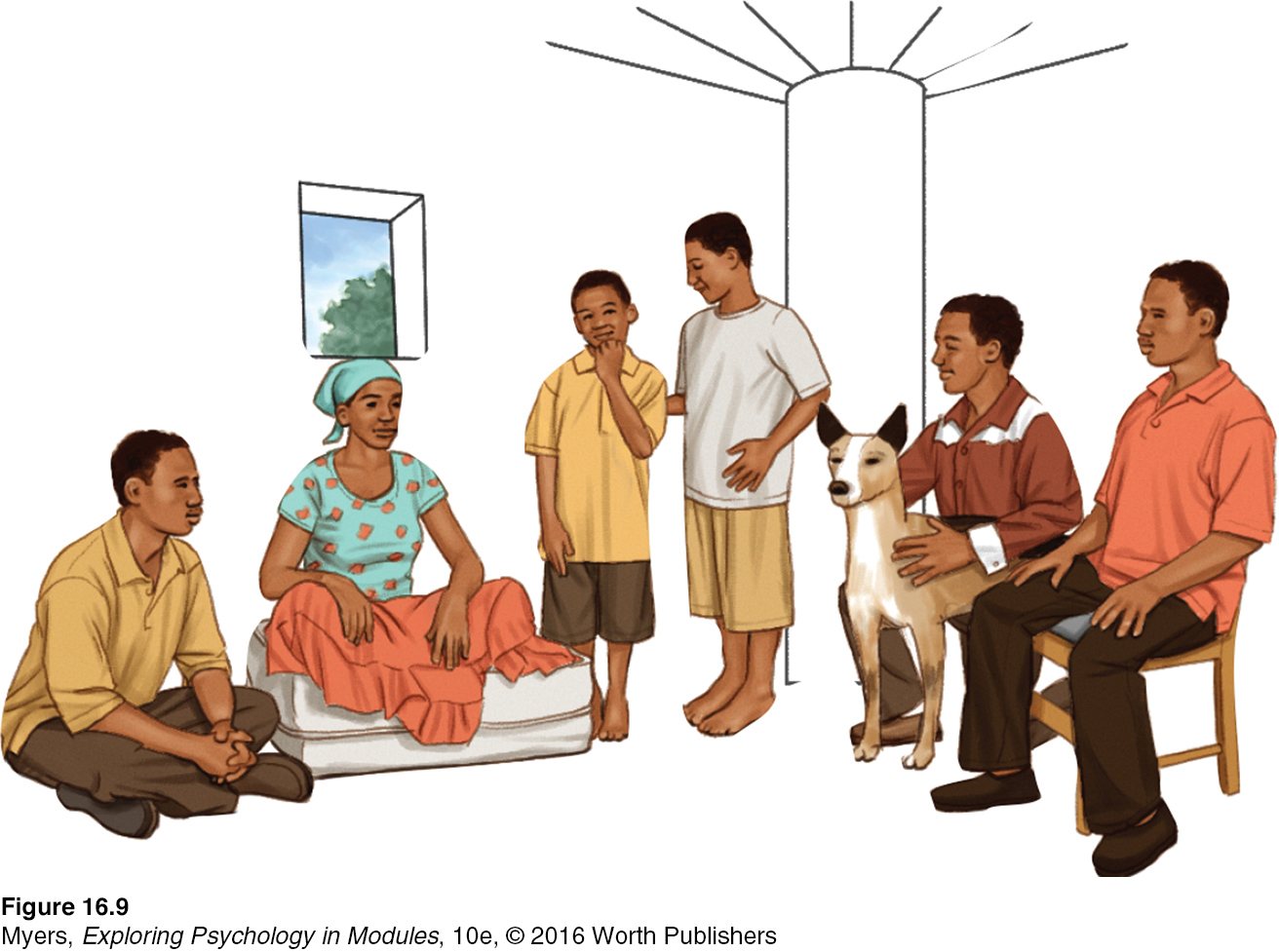16.6 Context Effects
A given stimulus may trigger radically different perceptions, partly because of our differing perceptual set (FIGURE 16.9), but also because of the immediate context. Some examples:

When holding a gun, people become more likely to perceive another person as gun-
toting— a phenomenon that has led to the shooting of some unarmed people who were actually holding their phone or wallet (Witt & Brockmole, 2012). Imagine hearing a noise interrupted by the words “eel is on the wagon.” Likely, you would actually perceive the first word as wheel. Given “eel is on the orange,” you would more likely hear peel. This curious phenomenon suggests that the brain can work backward in time to allow a later stimulus to determine how we perceive an earlier one. The context creates an expectation that, top-
down, influences our perception (Grossberg, 1995). How is the woman in FIGURE 16.10 feeling?

RETRIEVE IT
Question
Does perceptual set involve bottom-
